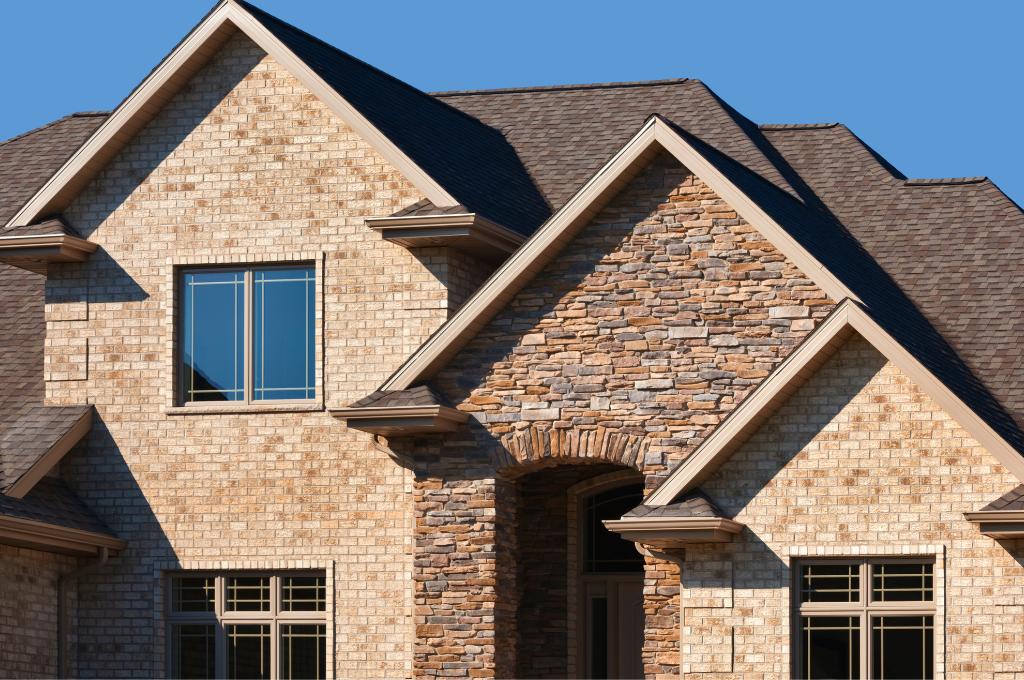
What is Gable Roof
A gable roof is a form of roofing design that creates a triangle shape by having two sloped sides that meet at the ridge, which is the highest point of the roof. This type of roof is also known as a hip roof. The vertical wall that is formed by the slope of the roof is referred to as the gable, and it is commonly covered with siding or other materials. Gable roofs are known for their ease of construction, straightforward design, and capacity to make the most out of the available space within.
How Does a Gable Roof Work
Gable roofs are designed to act as a drainage system, allowing water and snow to be swiftly drained off the surface of the roof. Rainwater and snow are able to flow quickly down the sides of a gable roof because of its high slope,
Designing and Building a Gable Roof
To guarantee that a gable roof will serve its purpose and last for many years, its design and construction must be meticulously planned. The pitch of the roof, its height, its overhang, and the materials that are utilized are all important concerns. The angle at which the roof slopes are referred to as the pitch of the roof, and it can have an impact on the roof’s capacity to shed water and snow. A roof with a steeper pitch may be better at directing water away from the structure, but it may also be more prone to damage from wind. It is important that the height of the roof be appropriate to both the size of the structure and the overall design.
✓ Easy to construct
Since they are so simple to put up, gable roofs are frequently selected for both residential and commercial buildings. This makes them a versatile and cost-effective option. Because of its straightforward architecture, the gable roof can be quickly and easily installed, which helps cut down on both the amount of time and money spent on labor.
✓ Versatile design
Gable roofs, with their versatile design, may be adapted to a wide range of architectural styles, from the more classic to the more contemporary. They may also be modified in a variety of ways, such as by having dormers, skylights, and other features added to them, which will improve both their practicality and their overall appearance.
✓ Effective at shedding snow and water
The high slope of a gable roof provides for effective water and snow drainage, which in turn reduces the chance of leaks and water damage. Gable roofs are the most common type of residential roof in the United States. Because of this, gable roofs are frequently selected in regions that receive a significant amount of rain and snow.
✓ Add additional space
Gable roofs may also give more attic or storage space, making them a perfect choice for homeowners that want additional storage or living space because of their ability to provide additional space.
✘ Vulnerable to high winds
Because of its steep slope, a gable roof is susceptible to being damaged by high winds, and this is especially true during storms like as hurricanes and tornadoes. High winds can produce a lifting effect, which can result in the roof becoming separated from the rest of the structure.
✘ Limited ventilation
There is a possibility of inadequate ventilation with gable roofs, particularly in the attic region. This can lead to a buildup of moisture, which in turn can promote the growth of mold and mildew, which in turn can threaten the structural integrity of the roof.
✘ May require additional support
The weight of a gable roof may be enormous, especially if it is made from heavy materials such as tiles or metal, which means that it is possible that extra support will be required. It’s possible that this will require extra support in order to prevent drooping or structural damage.
✘ Not ideal for high snow loads
Although gable roofs are good at shedding snow, it is possible that they are not the best choice for locations that receive a lot of snowfall each year. Snow’s weight may impose a substantial strain on the roof, which can eventually lead to structural damage if left unchecked.
Gable roof FAQs
What is the most common type of gable roof?
The side gable is the most typical variation of the gable roof style.
How does a gable roof work?
Gable roofs are designed to act as a drainage system, allowing water and snow to be swiftly drained off the surface of the roof.
What materials can be used in gable roof construction?
Asphalt shingles, metal, clay tiles, and wood shakes are examples of materials that are frequently utilized in the building of gable roofs.
What are some common issues in gable roof construction?
Typical problems that arise during the building of gable roofs include inadequate ventilation, inappropriate flashing, and insufficient support.
How can homeowners extend the lifespan of their gable roof?
Homeowners may increase the lifespan of their gable roof by arranging routine inspections with a qualified roofing contractor and doing routine maintenance on their roofs on a consistent basis.
Conclusion
Gable roofs are a common roofing design that is preferred for their practicality as well as their appealing appearance. They are simple to put up, adaptable, and perform admirably in terms of repelling water and snow. Yet, ensuring that they are designed, built, and maintained correctly is essential to ensure their durability and effectiveness. In order to increase the lifespan of their gable roof, homeowners should arrange routine inspections with a qualified roofing contractor and do routine maintenance on their roofs on a consistent basis.


